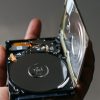Improving Computer Memory with Magnets
We already know that magnets have a place in many of our household objects that we use on a daily basis. They’re in our jewelry, our cabinets, and even our vacuum cleaners. Most importantly, magnets are present in our computers! As anyone who has ever lost their laptop charger knows, energy efficiency is important. But if it weren’t for magnets, computer memory wouldn’t be nearly as energy-efficient.
As the demand for portable electronics grows, the need for these electronics to also be energy efficient grows, too. The Semiconductor Research Corporation, a world-class technology research consortium, predicts that within twenty years, “the global computational demand for energy will be greater than the total amount produced.” How do we combat this growing demand?
New Findings in Magnetic Computer Memory
Recently, Vincent Sokalski, an assistant professor of materials science and engineering at Carnegie Mellon University, received a $1.8 million grant for his project researching new ways to store and process information with magnetic materials more efficiently.
Magnetic materials are already used in most hard disk drives for long-term storage. However, semiconductors, which are used for short-term memory, are the biggest energy hogs. As consumers’ size expectations shrink, semiconductors can only shrink so much without losing information storage capabilities.
The Discovery
In a May 3rd study in the journal Science, researchers at the University of Washington have found a way to encode information using magnets that are just a few atoms wide! Using sheets of chromium tri-iodide (CrI3), the researchers were able to “exert unprecedented control over the flow of electrons based on the direction of their spins.”
"Our work reveals the possibility to push information storage based on magnetic technologies to the atomically thin limit," said one of the co-authors of the report, Tiancheng Song.
While this seems like a tiny (pun intended) improvement, this is a huge leap forward for energy efficiency and reliable data storage for our electronic devices. We’re excited to see where the scientific world goes from here!
As we learn more about data storage, we’ll be sure to keep you updated. Just keep your eye on our News & How-To’s section of our website to follow along with this captivating saga.

